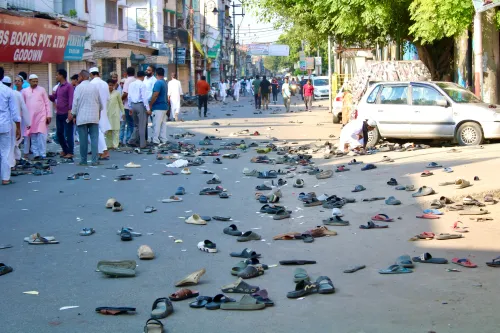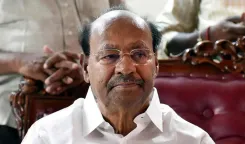Did the Nitish government reserve 84.4% teaching posts for Bihar domicile candidates before the Assembly elections?

Synopsis
Key Takeaways
- 84.4% of teaching posts reserved for Bihar residents.
- Only 15% open to non-Bihar candidates.
- Emphasis on local job preference.
- Double honorarium for physical education teachers.
- Potential for legal challenges.
Patna, August 5 (NationPress) In a significant political and social development, the Bihar Cabinet, under the leadership of Chief Minister Nitish Kumar, has approved a decision to allocate 84.4 percent of teaching positions exclusively for the state's residents.
This initiative arrives just months prior to the Bihar Assembly elections, showcasing a deliberate effort to emphasize local candidates in the educational sphere.
The resolution was part of the Bihar State School Teacher Appointment, Transfer, Disciplinary Action and Service Condition (Amendment) Rules, 2025, included in the 36 proposals endorsed during Tuesday's Cabinet session.
According to Additional Chief Secretary S. Siddharth from the Cabinet Secretariat, Bihar currently implements a 50 percent caste-based reservation, 10 percent for economically weaker sections (EWS) in the general category, and 35 percent horizontal reservation for women of Bihar origin.
From the remaining 65 percent of general category positions, the Cabinet has decided that 40 percent will be set aside for candidates who completed their matriculation (Class 10) and intermediate (Class 12) from any board within Bihar.
This ultimately allows only 15 percent of total positions to be accessible to all candidates, including those from outside Bihar.
The Cabinet indicated that even if 10 to 15 percent of applicants hail from outside the state, the framework guarantees that approximately 84.4 percent of teaching roles will effectively be filled by Bihar domicile candidates.
This action responds to growing demands for local job preferences and resonates with similar policies enacted in other Indian states.
In light of the approaching elections, this strategy is perceived as an effort to solidify regional and youth backing, particularly among aspiring teachers who have consistently sought increased representation in the educational framework.
While proponents regard this decision as a move towards employment equity for locals, some analysts predict that the 15 percent open category may ignite legal and political disputes, particularly among non-domiciled candidates.
In addition to the domicile policy, the Cabinet has also decided to double the honorarium for physical education teachers, cooks, and night watchmen.









